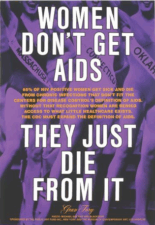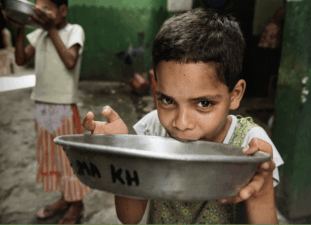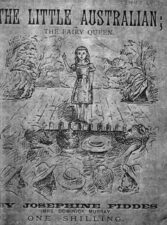Robin Joyce
Part 2
Leaders’ roles and activities are usually, although not always, easy to follow. Jean Beadle, as described in Part 1, was one woman whose career in the labour movement was well known. However, other women involved in the Western Australian labour movement, comprising the Australian Labor Party and unions, appear only in minutes, newspaper stories, lists of meetings attended and positions held in these organisations.
Information about Henrietta Hooten, the Labor women’s representative on the official organ of the Western Australian branch of the ALP, the Westralian Worker, union activist, Congress delegate, candidate for Senate pre-selection and writer of political pamphlets and articles epitomises the fragmentary nature of the evidence. She is mentioned fleetingly in a number of the capacities she held and probably played a significant role in labour politics. However, the records are mostly limited to the debate that took place in the Westralian Worker in relation to her suitability as a Senate candidate. In 1930 she was considered important enough to be invited to a meeting of State Executive and Metropolitan Council representatives with the Parliamentary Labor Party, a fairly high level of conclave which implies a certain capacity about its participants.
Similarly, short biographies of women in the Labor Women’s Organisation show that they reached prominence in a number of capacities in those organisations, as well as in party positions where they held a high profile in mixed groups (Labor Women’s Souvenirs 1933 and 1937). Elsie McCallum, later known as Mrs W.D. Johnson (illuminating yet another device that renders women invisible) was a delegate to the 1900 Labor Congress and in 1910 was elected treasurer of the state branch of the ALP.
In the same period Jean Beadle was joined by another two women as Congress delegates, Made Cort and Jessie Johnson. They were not only delegates but members of Congress committees. Their work was commended by the Westralian Worker as demonstrating skills equal to the most practised of politicians. Over the whole period there is evidence in photographs, lists of delegates, Congress Reports and Labor Women’s Souvenir journals that at least several women (never less than three and often six or seven) were delegates to most Congresses. Their access was through both mixed and women’s branches, demonstrating their success when competing with men for these important positions.
Women were included in the more important and public aspects of political activism through their work in election campaigns. Mrs Jane Ryan organised the goldfields electorates of Kalgoorlie and Hannan’s at state and federal elections and other women were actively sought to speak at rallies (EWP). They sought and won positions on the executive of the Party, at branches and councils. Mrs Alice Rapley’s career of political activism spans many years. She was a delegate to the Metropolitan Council for several years until 1918 and President, Vice-President or Secretary of her local branch until at least 1933. Mrs Jabez Dodd, an activist with Labor Women’s groups in later years, was a delegate to State Congress in 1907, a member of a select committee in 1908 and auditor of the Eastern Goldfields Council (EWP).
From even this fragmentary evidence, largely dependent on Labor Women Organisation material, it is clear that women were prominent as capable, committed and visible party political activists throughout the early 1900s and later.
Women were also active in the trade unions, mostly coming to prominence in the 1920s, with Cecilia Shelley standing out in her capacity as long term secretary and organiser in the Hotel and Restaurant Employees Union. She was also involved with the ALP and Labor Women’s Organisations. However, other women also filled important positions in union executives but have been largely ignored. By 1928 sixty-two trustee positions had been held by women, twenty-one vice-president positions and twelve positions as president or chair. Women had been treasurers twenty-five times. In the 1920s two women were active in the Cleaners, Caretakers and Lift Attendants Union as secretary, one, Sylvia Donaldson later becoming an Inspector of factories in 1923. Ivy Pirani followed her husband as secretary of the Hospital and Asylum Employees union in 1923 and retained the position until the 1930s. May grace and Helen McEntrye were secretary of the Goldfields Hotel and Restaurant Employees Union in the late 1920s. Annie Warren became secretary of the South West Clothing Trade Union after a stint as treasurer.
Many other women are likely to have remained invisible but not inactive. There is little reason to suppose that they were of an inferior capacity to those given a voice through Labor Women’s souvenir journals, minutes and their papers submitted to the Battye Library. The main difference between those closely associated with the Labor Women’s Organisations and those who remained linked only to mainstream politics or union activity is that Labor women’s activities exposed them to feminist ideology through contact with interstate and overseas feminists and their publications. Women in the labour movement in the 1900s in Western Australia were indeed political activists in the labour movement, party and unions. Although some were housekeepers, it is clear that many had no time to bake a scone or lift a teapot. The myth that so many women did the latter, and none were accepting scones and tea after an arduous day campaigning, needs to be unremittingly challenged. It is a myth that not only deprives those early women of justice, but establishes the idea that the labour movement women activists have no or short term history or one that is peopled by only a small number of individuals. Setting the record straight is hard because of the paucity of material, but not impossible.
EWP: Evelyn Wood Papers, held at the Battye Library, Western Australia.
This paper has been edited from the same title originally published in Australian Women and the Political System, Marian Simms, Cheshire Longman, Melbourne, 1984.


